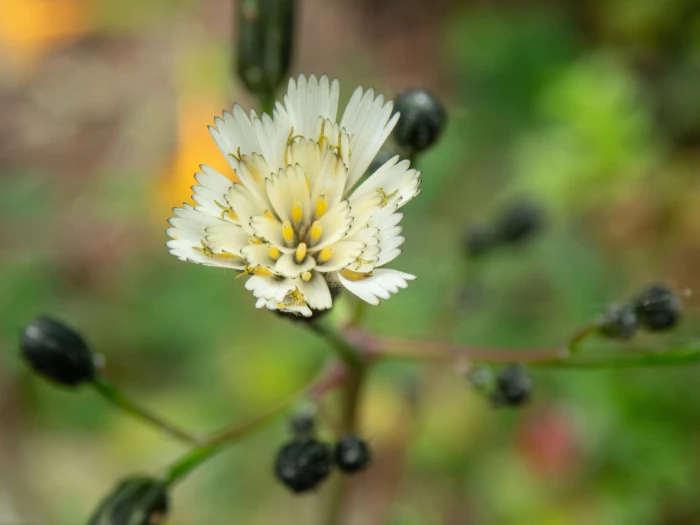White Hawkweed
(Hieracium albiflorum)
White Hawkweed (Hieracium albiflorum)
/
/

© Don Loarie
CC BY 4.0
Image By:
© Don Loarie
Recorded By:
Copyright:
CC BY 4.0
Copyright Notice:
Photo by: © Don Loarie | License Type: CC BY 4.0 | License URL: http://creativecommons.org/licenses/by/4.0/ | Uploader: dloarie | Publisher: iNaturalist |

























Estimated Native Range
Climate Requirements for Oakley, California
| This Plant | Your Site | Plant Suitability for Your Location | ||
|---|---|---|---|---|
| • Precipitation | 7" - 132" | 13" | Your precipitation may be insufficient for this plant. Irrigate N" / year. | Irrigate N" / year |
| • High Temp. | 44°F - 99°F | 89°F | Your summer temperatures are normal for this plant. | Excellent |
| • Low Temp. | -21°F - 43°F | 37°F | Your winter temperatures are normal for this plant | Excellent |
This plant should grow well at your location with about N inches per year (Y minutes per month) of irrigation.
Summary
Hieracium albiflorum, commonly known as White Hawkweed, is a perennial herb native to a variety of habitats in western North America, including open woodlands, forest edges, meadows, and alpine zones, ranging from Alaska to Mexico and east to Manitoba and South Dakota. It typically grows at low to moderate elevations. This species reaches a modest height of 1-2 feet (30-60 cm) and spreads to a similar width. White Hawkweed is characterized by its clumping form and multiple flower heads, each with 6-25 white ray flowers resembling a dandelion but more prolific in bloom. The flowering season extends through summer, and the flowers are quite showy, attracting various pollinators.
White Hawkweed is appreciated for its adaptability to different environments and its role in supporting pollinators. It is often used in wildflower gardens, meadow plantings, and for naturalizing areas. In cultivation, it prefers well-drained soils but can tolerate a range of soil types, from dry to moderately moist. It thrives in full sun to part shade. While generally low-maintenance, it can become invasive in some conditions, spreading by both seed and rhizomes. Gardeners should be aware of its potential to spread and manage it accordingly.CC BY-SA 4.0
White Hawkweed is appreciated for its adaptability to different environments and its role in supporting pollinators. It is often used in wildflower gardens, meadow plantings, and for naturalizing areas. In cultivation, it prefers well-drained soils but can tolerate a range of soil types, from dry to moderately moist. It thrives in full sun to part shade. While generally low-maintenance, it can become invasive in some conditions, spreading by both seed and rhizomes. Gardeners should be aware of its potential to spread and manage it accordingly.CC BY-SA 4.0
Plant Description
- Plant Type: Herb
- Height: 1-4 feet
- Width: 1-2 feet
- Growth Rate: Slow, Moderate
- Flower Color: White
- Flowering Season: Spring, Summer, Fall
- Leaf Retention: Deciduous
Growth Requirements
- Sun: Full Sun, Part Shade
- Water: Low, Medium
- Drainage: Medium
Common Uses
Bee Garden, Butterfly Garden, Low Maintenance
Natural Habitat
Open woodlands, forest edges, meadows, and alpine zones
Other Names
Common Names: White-Flowered Hawkweed
Scientific Names: Hieracium albiflorum, Chlorocrepis albiflora, Hieracium albiflorum f. albiflorum, Hieracium albiflorum f. laxior, Hieracium albiflorum f. lyallii, Hieracium helleri, Hieracium vancouverianum, Pilosella albiflora
GBIF Accepted Name: Hieracium albiflorum